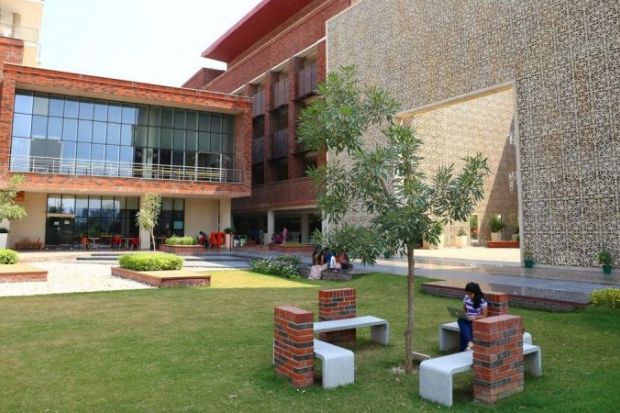In the past two decades, a quiet revolution has been taking place in Indian higher education.
The handful of well-funded, high-quality, non-profit private universities that have recently been founded have already achieved considerable success. The likes of Azim Premji, Ashoka, Shiv Nadar, O. P. Jindal Global, Krea and Ahmedabad universities are attracting ambitious students and excellent faculty – in some cases on the international market – to their attractive and well-equipped campuses.
Private higher education is, of course, not new in India. Nearly four-fifths of Indian colleges are privately managed (aided and unaided), enrolling about two-thirds of students. And 412 of India’s 1,047 universities are in the private sector, accounting for more than 2 million students.
A few high-quality privates have a reasonably long history, too. Examples include Birla Institute of Science and Technology-Pilani (founded in 1964), the Manipal Academy of Higher Education (1953), Symbiosis International University (1971) and Amrita Vishwa Vidyapeetham (1994). But most of the private sector is of indifferent or poor quality, and labour market outcomes for its graduates are modest.
While there are major variations among the start-ups, they share some characteristics. All aim to be “world class”, with research missions and innovative teaching strategies centred on liberal arts. And unlike the traditional private universities, the elite privates are mainly supported by corporations and very wealthy individuals, who are not concerned about making profits and have clearly articulated social missions. Their deep pockets allow them to offer an array of services to students that are generally unavailable at other universities, alongside relatively small cohorts and better faculty-to-student ratios.
The elite privates are trying to project themselves as alternatives to top public institutions. The issue is that they all charge significantly higher tuition rates than both public and traditional private universities. They do offer some scholarships to students who cannot afford the full cost, but they mostly attract students from affluent families who desire a quality education, relevant to market needs, on well-resourced campuses that are free from the strikes and politics that sometimes are endemic at public universities and colleges.
The affordability issue is part of the explanation why the elite private sector is not as selective as top public institutions, such as Indian Institutes of Technology. But that may change as its critical mass grows. The Adani Group has received approval from the Gujarat government to start a university in that state, for instance. And the Jio Institute, backed by the Reliance empire, is currently being established in Maharashtra.
It is worth reflecting on the trajectories of prominent American private universities that were established by wealthy donors. Clark University in Worcester, Massachusetts, was founded in 1887 with funds from a wealthy businessman, Jonas Clark. It was the first postgraduate research-intensive university in the US, following the German model. Unfortunately, Clark suffered financial setbacks and today the university is a regional institution.
Two further examples were more successful. Stanford University, established in 1885, was funded by railroad magnate Leland Stanford. Unfortunately, the Stanford family interfered in its management in its early years, and it was not until more than a half century later that it reached world-class status.
By contrast, John D. Rockefeller kept his hands off the University of Chicago, which his fortune founded in 1890. Within two decades, Chicago’s imaginative leadership had made it a major research powerhouse, awarding the largest number of doctorates of any American university. Interestingly, when Chicago’s president heard of Clark’s troubles, he hired away its faculty. The lessons are that creating successful private universities takes significant and sustained resources, good ideas and independent governance.
It is important that India’s elite privates also go from strength to strength. Their international partnerships, diversified programmes, online visibility, employer engagement strategies and participation in world university rankings are all novel departures from the traditional modus operandi in Indian universities.
They are bringing new ideas, effective academic governance and considerable potential to a higher education system that is much in need of new thinking.
Philip G. Altbach is research professor and distinguished fellow at the Center for International Higher Education, Boston College. Eldho Mathews is deputy adviser to the Unit for International Cooperation at the National Institute of Educational Planning and Administration, New Delhi.
POSTSCRIPT:
Print headline: A breath of (pricey) fresh air
Register to continue
Why register?
- Registration is free and only takes a moment
- Once registered, you can read 3 articles a month
- Sign up for our newsletter
Subscribe
Or subscribe for unlimited access to:
- Unlimited access to news, views, insights & reviews
- Digital editions
- Digital access to THE’s university and college rankings analysis
Already registered or a current subscriber? Login







